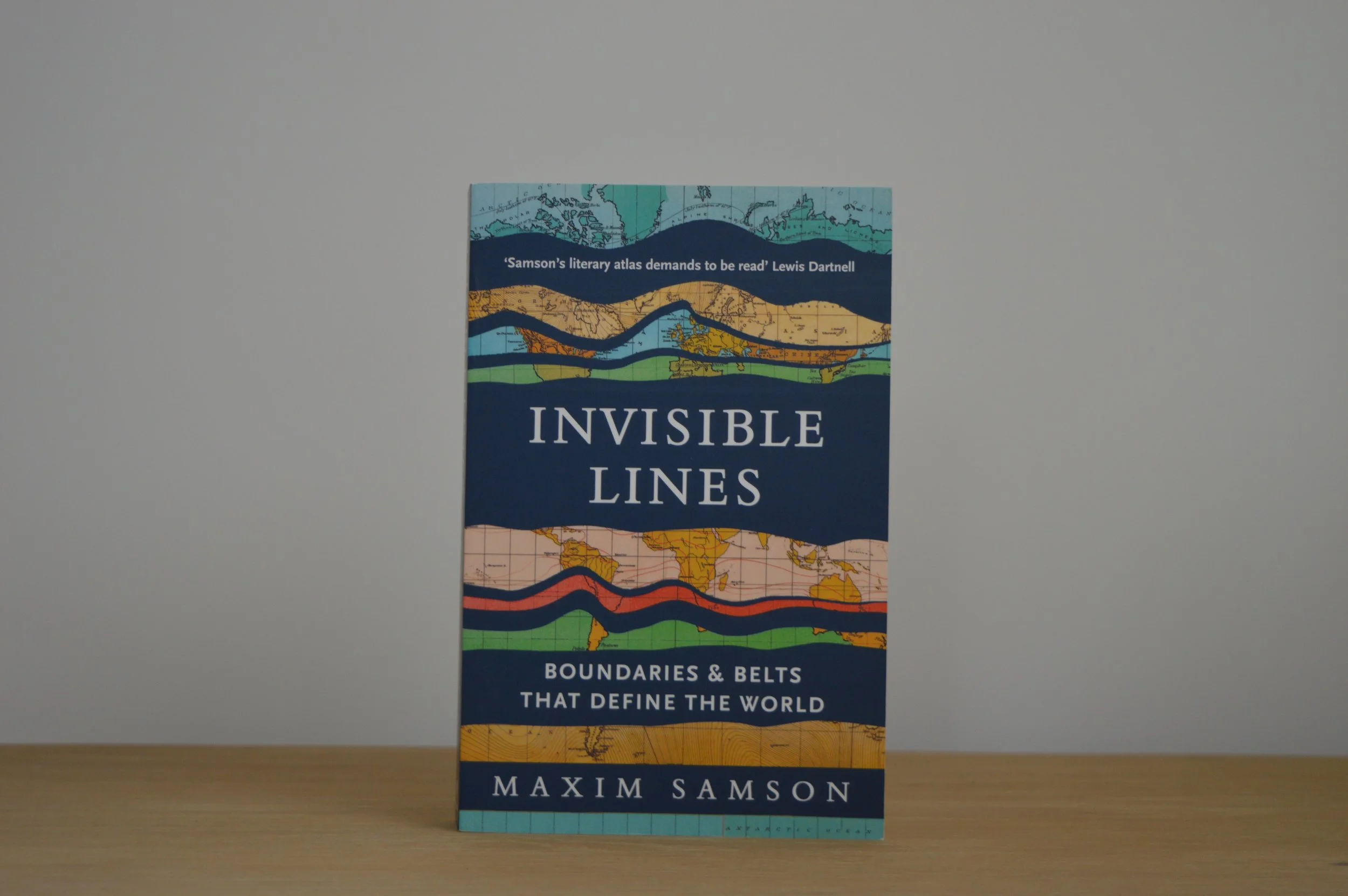Invisible Lines
August 2025
Overall verdict: ★ ★ ★ ★
To buy this book, click here.
Why this book?
Having seen the beautiful cover of this book online (yes, I know, never judge a book by its cover!), I’m very grateful to Profile Books for sending me a copy of this book to read for my subject knowledge and general interest.
This is a book about boundaries and invisible lines that define our world. Although defining a boundary simply as a dividing line which is necessarily spatial and as such can be mapped, Maxim Samson focuses not only on more formal borders but on the ‘types of lines that rarely appear on our physical and political maps and, when they do, have impacts that go far beyond what is generally shown’ (p.2). Through this focus, Samson has produced a really original and insightful book that is very different from previous books I’ve read about borders and boundaries (for example, Divided). For me, the originality of the content discussed in the geographical case studies of this book was a particular highlight. Whilst I’d heard of the Arctic tree line, the malaria belt and the Antarctic circumpolar current which are discussed in depth in the first part of the book, I hadn’t heard of the profoundly geographical Wallace line or tornado alley, or fully appreciated the significance of the Qinling-Huaihe line.
For teachers:
It is the first half of the book that is most directly relevant to what many of us teach but all of the book is an interesting and insightful read and, as the FT comment on the back of the cover states, ‘an illuminating glimpse of the chain reactions of human and physical geography’.
Reading the introduction saw me, pen in hand, eagerly underlining sentences to use in lessons and resources- particularly when teaching the Migration, Identity and Sovereignty topic of Edexcel A-Level geography. Highlights include:
‘Often it is not the physical entity that holds the power, but rather the intangible meaning and possible consequences associated with it.’ (p.3)
‘Given that we cannot fully understand a place without knowing where it begins and where it ends, the boundaries separating it from its surroundings are crucial.’ (p.4)
‘Boundaries and belts are fundamental to how we understand and experience the planet, because they compel us to question what distinguishes any place- however widely or narrowly described- from another’ (p.11)
As the case studies then begin, it was the in-depth discussion of the following boundaries and lines that I found particularly useful for developing my subject knowledge:
Wallace line
Antarctic Ocean currents
Artic tree line
Malaria belt
The Qinling-Huaihe line
Green belt
International Date line
North Sentinel Island
To buy this book, click here.
